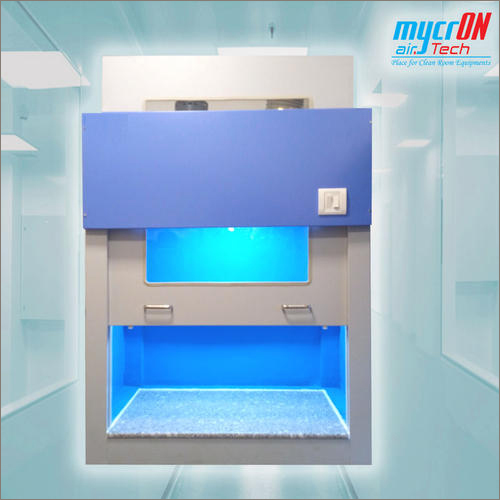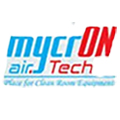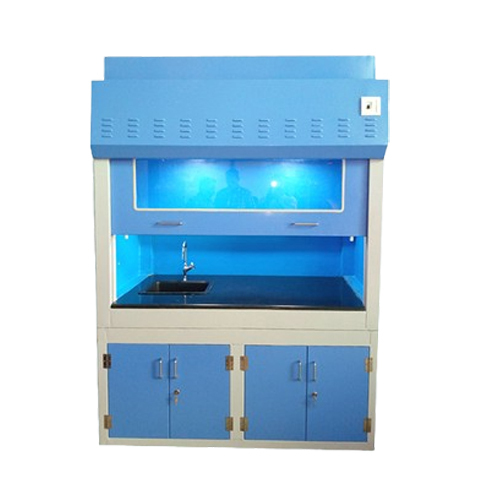
Table Top Fume Hood
Product Details:
- Product Type Fume Hood
- Usage Industrial
- Material Metal
- Application Industrial, Laboratory
- Click to View more
Table Top Fume Hood Price And Quantity
- 35000 INR/Unit
- 1 Unit
Table Top Fume Hood Product Specifications
- Metal
- Industrial, Laboratory
- Fume Hood
- Industrial
Table Top Fume Hood Trade Information
- Cash Advance (CA)
- 5 Days
- South India
Product Description
A table-top fume hood, often referred to as a bench-top fume hood or a compact fume hood, is a scaled-down version of a lab fume exhaust hood created to offer targeted containment and ventilation for particular purposes. For laboratories with limited space or for certain operations that call for a specialised containment system, it offers a portable and compact option.
The main characteristics and purposes of a table-top fume hood are as follows:
1. Table-top fume hoods are more compact than traditional fume hoods in size. They often sit on workbenches or benches in laboratories, taking up less space but still providing containment and ventilation for particular uses.
2. Table-top fume hoods have an enclosed workstation similar to those found in normal fume hoods, and it is constructed of strong materials like fibreglass or stainless steel. The work area is built to hold back and remove any dangerous dust, vapours, or gases produced during laboratory operations.
3. Sash or Door: A table-top fume hood has a sash or door at the front opening that can be lifted or lowered to allow access to the inside. Between the user and the dangerous compounds inside the hood, the sash serves as a barrier.
4. Table-top fume hoods offer localised ventilation and the removal of dangerous compounds. The exhaust system draws air and impurities into the hood through an integrated fan or blower, which creates negative pressure inside the hood.
5. Table-top fume hoods are frequently transportable, making it simple to move them throughout the lab or even between separate workstations. When particular procedures or experiments need for specialised containment and ventilation, this flexibility is helpful.
6. Table-top fume hoods are frequently utilised for particular applications or procedures that produce hazardous compounds. They are appropriate for jobs like handling chemicals, preparing samples, weighing and dispensing powders, or conducting small-scale studies that call for focused containment and ventilation.
7. Table-top fume hoods should be used with the same level of safety as is observed when utilising traditional fume hoods. This include using the necessary personal protective equipment, making sure the airflow is controlled properly, and routinely maintaining and testing the hood to ensure it is working properly.
It's crucial to remember that table-top fume hoods could have restrictions on the size of objects or equipment they can hold and the amount of fumes they can efficiently handle. In order to establish whether a table-top fume hood is appropriate for your purposes, it is imperative to evaluate the specific requirements of your processes and speak with safety specialists or experts.
Product details
| Frequency | 50/60 Hz |
| Illumination | Yes,LED |
| MOC of Working Table | Granite Stone |
| Motor Blower | Dynamically balanced Motor with Aluminum Blower |
| Phase Type | Single Phase |
| Power Socket | Yes,5A |
| Voltage | 300 V |

Price:
- 50
- 100
- 200
- 250
- 500
- 1000+





 Send Inquiry
Send Inquiry Send SMS
Send SMS